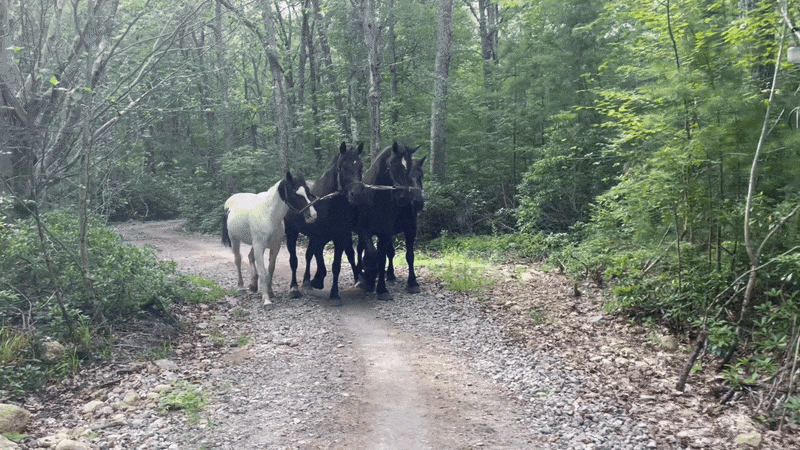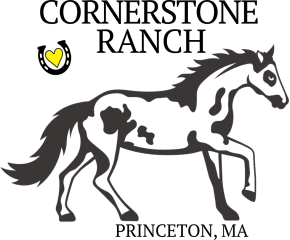THE PRACTICE OF VOICE CUES AT THE RANCH

**The Practice of Voice Cues at Cornerstone Ranch**
Horses listen to and learn verbal commands, though they do not understand conversations; instead, they associate specific words with actions through consistent training and positive reinforcement, and they are susceptible to vocal tone and emotion, understanding the meaning behind praise and potentially pet-directed speech.
At Cornerstone Ranch, our trainers and students celebrate the transformative power of voice control in horse riding. Our horsemanship programs focus on building a strong foundation for communication through vocal cues. This holistic approach nurtures well-rounded riders who are capable of fostering deep, meaningful connections with their horses, as horses are highly responsive to sounds.

**Empower Yourself with the Mastery of Voice Cues**
Horses learn to associate a sound with an action through training. For example, they learn to “whoa” by consistently hearing the word “whoa” upon which the rider reins them to a stop. When the cues are timed correctly, the horse learns to stop before the rider touches his mouth. If the verbal command and the rein command are simultaneous, the horse does not know to associate the verbal command as a chance to react before the stronger command, such as the rein, leg, or crop.
By mastering and consistently using simple voice cues during horse training, you can unlock a world of benefits. Research indicates that horses respond better to gentle voices than to harsh, loud tones. This method of communication becomes a powerful tool in your training journey, empowering you with a sense of control and confidence.
**Clear Commands Guide Precision**
Horses don’t understand human language conceptually, but their ability to learn through consistent repetition and stimulus-response allows them to associate verbal cues with the desired response, fostering trust and enhancing communication between horse and trainer. Voice control empowers riders to issue clear and precise commands that skillfully guide their horse’s actions. Consistency in tone and phrasing fosters associations between specific words and desired behaviors, reducing confusion and building trust. This trust enhances every training session, instilling a sense of security and confidence in your abilities.
**Limitations of Teaching Horses to Mirror Body Language; Universal and Consistent = More Effective**
Voice commands are versatile instruments that shine in various training scenarios—whether you’re leading, ground-tying, driving, riding, or longeing. Consistently using voice commands in the presence of a horse elevates your effectiveness as a trainer.
At Cornerstone Ranch, in addition to riding, horse-drawn rides, and ground work form a crucial part of the training routine. We recognize that training horses to respond to human movements rather than verbal cues can lead to confusion. This approach lacks consistency when riding, driving, or expecting the horse to stand still. Why oscillate between body language and voice commands when a unified approach with vocal cues can be employed throughout? Since visual commands are not possible while riding and driving, using voice commands for all aspects of training presents an excellent opportunity for consistency and reliability.
**Enhancing Safety and Control**
For instance, a firm “walk on” invites forward movement, while a calm “easy” cultivates relaxation in high-pressure situations. This method lays a strong groundwork for advanced riding techniques, ensuring safety for both you and your horse and providing a sense of security in challenging conditions.
**Reinforcing Timing in Behavior**
When a horse exhibits unwanted behavior, a confident “easy” can help soothe the animal and redirect its focus. Using voice cues wisely enables trainers to indicate whether behaviors are correct or incorrect effectively. Well-timed verbal cues will allow the horse to quickly associate actions with rewards or corrections, facilitating effective learning and accelerated progress.
Voice cues also instill consistency in training methods. By aligning the timing of verbal cues with physical actions, trainers create a predictable routine for the horse, reducing misunderstandings and enhancing the horse’s confidence. This confidence leads to more reliable performance during rides and training sessions.
**Sharpening Your Horse’s Training**
A horse’s attention can easily wander due to external distractions or a lack of interest. Trainers can use verbal cues to refocus the horse and maintain engagement effectively. This technique proves invaluable in busy environments, like riding trails or crowded arenas.
Consistent verbal communication keeps the horse mentally stimulated during demanding exercises. Whether practicing intricate maneuvers or refining foundational skills, trainers can use purposeful voice cues to guide the horse’s movements. This approach not only sharpens the horse’s focus but also enriches the overall training experience, deepening the bond between horse and rider and paving the way for long-term success.
**Be Mindful of Not Overusing Voice Commands**
However, excessive use of voice commands may lead your horse to tune you out. Conversations with horses differ from commands and may breed confusion and clutter, resulting in a less clear communication pathway and a lack of response to verbal cues. Additionally, repeating a verbal cue can lead to the horse being dull to the word.
At Cornerstone Ranch, we achieve the best results by issuing a command once or twice in some instances, but no more, without following up with a stronger command, such as a leg aid. Lastly, a rein aid and/or light tapping with the riding crop or whip produces the best results. Our goal is to achieve the lightest touch possible on the horse’s mouth through the bit or with our leg aids, and verbal cues help us accomplish this. As always, being present when working with horses and being a “thinking rider” is the most effective approach for consistency and minimizing confusion.
Suggested reading on the subject of using the voice as an aid:
- “Equine Behavioural and Physiological Responses to Auditory Stimuli in the Presence and Absence of Noise-Damping Ear Covers”
- The Gymnasium of the Horse by Gustav Steinbrecht
- Dressage Riding by Richard L. Watjen
- Classical Circus Equitation by H.J. Lijsen and Sylvia Stanier
- The Complete Training of Horse and Rider by Alois Podhajsky
- School of Horsemanship by Francios Robichon de la Gueriniere
- Academic Equitation by General Decarpentry
- Basic Training of the Young Horse by Reiner Klimke
- The Spanish Riding School by Hans Handler
- The Art of Horsemanship by Xenophon
